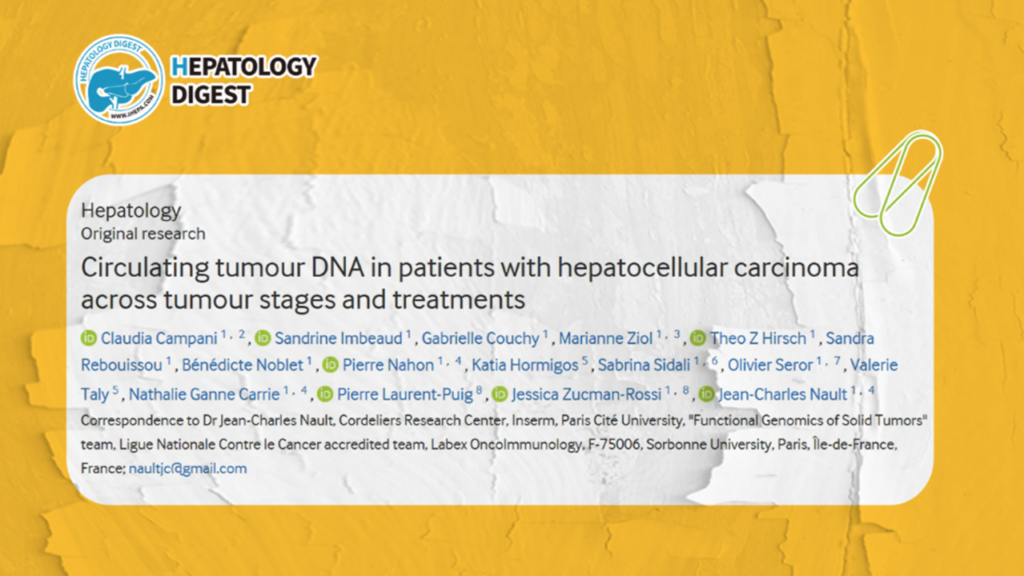
Editor's Note: A recent clinical study conducted by Dr. Jean-Charles Nault and his team at the Cordeliers Research Center of Sorbonne University, France, was published in Gut journal. This study reveals the dynamic changes in circulating tumor DNA (ctDNA) in patients with hepatocellular carcinoma (HCC) and its clinical significance. The findings provide new perspectives and tools for the clinical management of HCC, highlighting the potential of ctDNA monitoring as an important adjunct in the diagnosis and treatment of HCC.The study aimed to evaluate the dynamic changes and clinical application value of ctDNA as a promising non-invasive biomarker in HCC patients. It involved an in-depth analysis of 772 plasma samples from 173 HCC patients and 56 plasma samples from non-HCC chronic liver disease patients as controls.
Researchers collected plasma samples from patients at three time points: at diagnosis or treatment (n=502), 24 hours after local regional therapy (n=154), and during follow-up (n=116). Additionally, 232 corresponding tumor tissue samples were collected for comparative analysis.
Advanced sequencing technologies and digital PCR were used to detect circulating free DNA (cfDNA) concentrations and analyze mutations in genes such as TERT promoter, CTNNB1, TP53, PIK3CA, and NFE2L2. The combination of these technologies provided researchers with highly accurate and sensitive results.
The results showed that the mutation rate of ctDNA in active HCC patients was as high as 40.2%, significantly higher than that in inactive HCC patients (14.6%) and the non-HCC control group (1.8%) (P<0.001). Further analysis revealed that the TERT promoter had the highest mutation rate at 27.5%, followed by TP53 (21.3%) and CTNNB1 (13.1%), while the mutation rates for PIK3CA and NFE2L2 were relatively low. Notably, most of the mutations detected in ctDNA were consistent with those found in corresponding tumor tissues.
The study also found that the mutation rate of ctDNA increased with tumor staging (P<0.001). In 103 patients who underwent percutaneous ablation therapy, the presence and quantity of mutations in ctDNA before treatment were significantly associated with higher mortality risk (P=0.001) and recurrence rate (P<0.001).
Interestingly, 24 hours after local regional therapy, both cfDNA concentration and detectable mutations increased. Among 53 patients receiving systemic therapy, the baseline mutation rate of ctDNA was 60.4%, and in those treated with atezolizumab-bevacizumab, the persistent presence of mutations in ctDNA was significantly associated with radiological disease progression (63.6% vs 36.4%, P=0.019).
Dr. Jean-Charles Nault stated that this study not only confirms the potential of ctDNA as a non-invasive biomarker for HCC but also reveals its important role in HCC monitoring, treatment response evaluation, and prognosis assessment. Through dynamic monitoring of ctDNA, physicians can detect signs of tumor recurrence or disease progression earlier, allowing for timely adjustments to treatment plans. Moreover, ctDNA test results can guide personalized treatment, making therapy more precise and effective.
In summary, this study brings new perspectives and tools to the clinical management of HCC, and ctDNA monitoring is expected to become an important adjunct in the diagnosis and treatment of HCC in the future.


